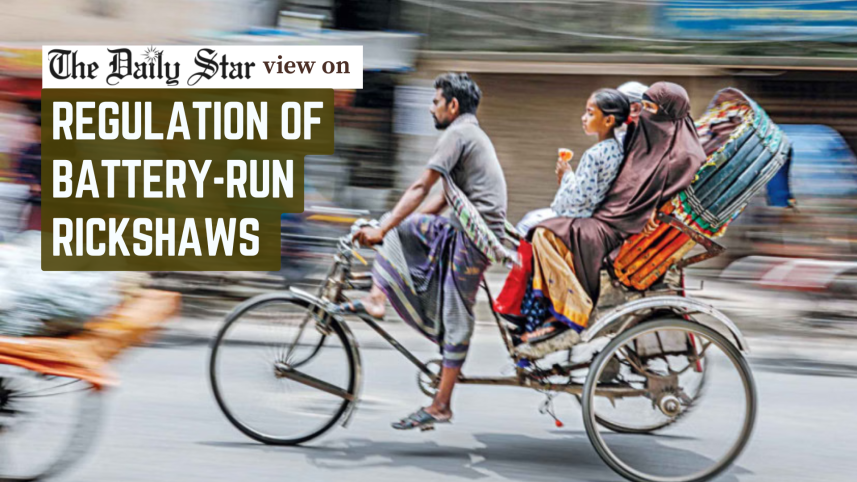Battery-run rickshaws must be regulated

It is true that battery-run rickshaws have provided a source of income to thousands from low-income groups; their operation also makes practical sense in an increasingly fast city. However, the unregulated way in which these vehicles operate comes at a heavy cost. Most drivers have no training in driving or traffic rules. Moreover, these rickety vehicles can, and often do, run at speeds of up to 30 km per hour, making them quite accident-prone.
Accidents involving battery-run rickshaws have therefore been on the rise, often resulting in injuries and even fatalities. According to Bangladesh Jatri Kalyan Samity, battery-powered rickshaws were involved in about 15 percent of the 315 road accidents in Dhaka during the Eid rush between March 24 and April 7. This pattern of road risk has often raised concerns, with a report in this paper citing urban planners who warn that without regulation these rickshaws may cripple Dhaka's transport network. Underlying their concern is the fact that drivers frequently ignore traffic signals and cross intersections at high speed, exacerbating congestion.
With no central registry or licensing system for those involved in this system in the country, the exact number of battery-powered rickshaws is unknown. But it is estimated that around five lakh vehicles operate in Dhaka city alone, far outnumbering paddle rickshaws. It is, therefore, heartening that the government has drafted a policy to regulate battery-powered rickshaws nationwide. The policy will reportedly prohibit these electric three-wheelers on highways and introduce mandatory registration, fitness certificates, and driving licences.
Moreover, if the government's pilot project using a Buet-designed model of the battery-run rickshaw turns out to be successful, it will make these vehicles structurally safer. The idea is to introduce the new models in selected areas of Dhaka, track illegal rickshaws there, and gradually replace traditional rickshaws with the safer new models in each zone. According to Dhaka North City Corporation, 20,000 drivers have already received training, with sessions continuing for others.
The government policy will also set vehicle fitness standards, provide for driver training, and impose penalties for violations of traffic rules. Drivers will be required to own the vehicle they operate, discouraging individuals from owning multiple rickshaws. Establishing discipline will understandably be very challenging given the staggering number of vehicles. But it is imperative that the policy is implemented without delay, accompanied by expanded training workshops for drivers, to ensure the safety of both operators and the public.



 For all latest news, follow The Daily Star's Google News channel.
For all latest news, follow The Daily Star's Google News channel. 


Comments